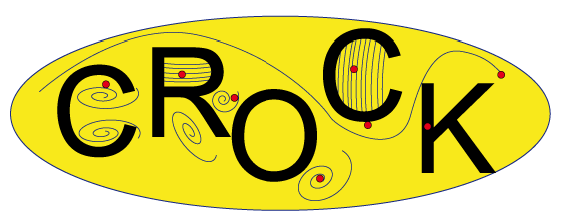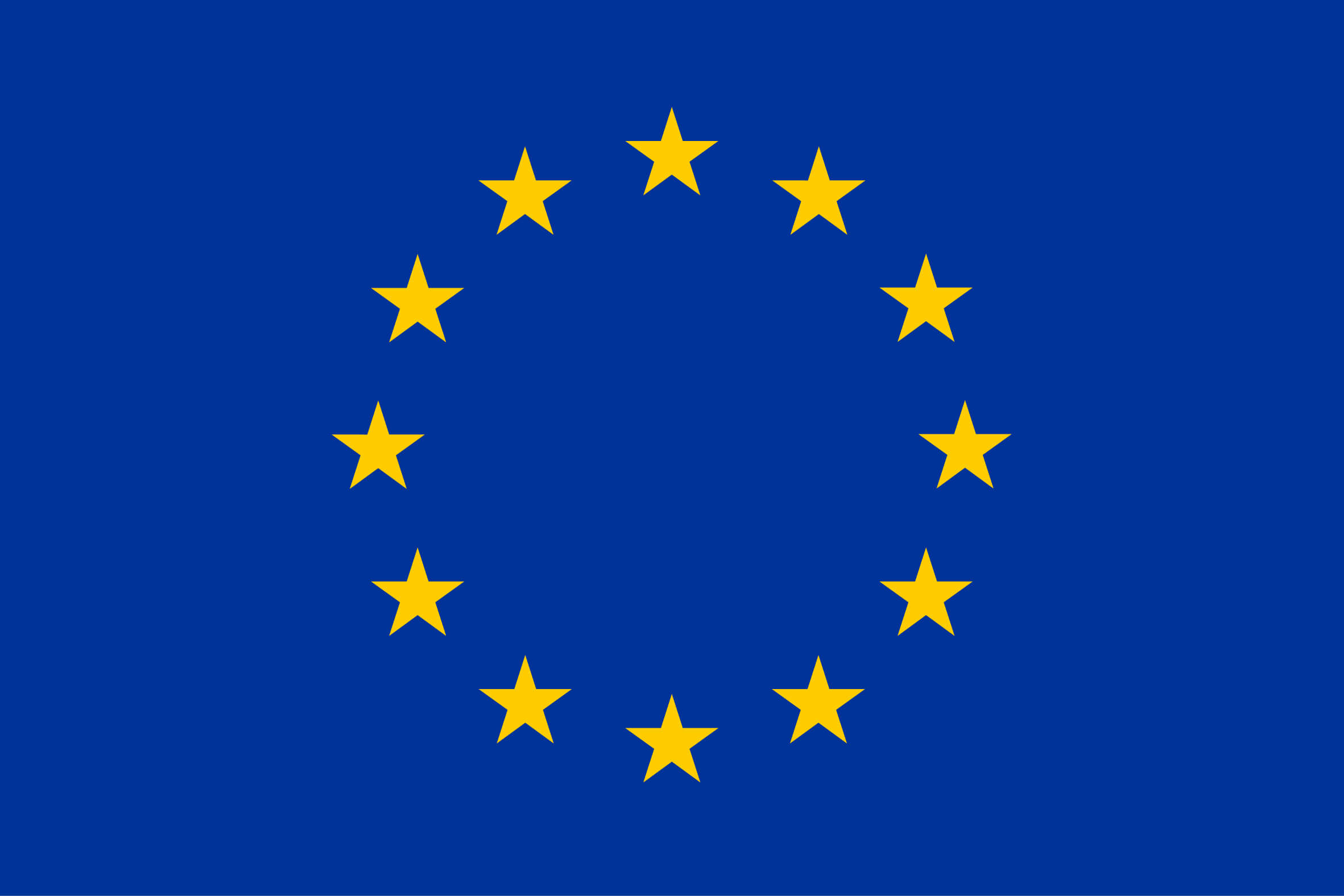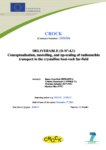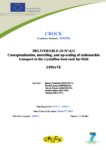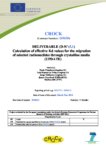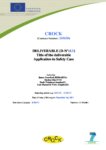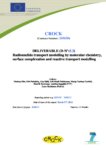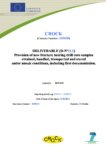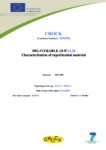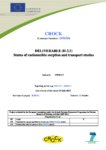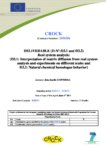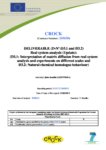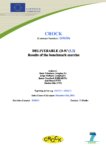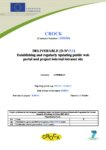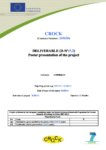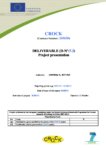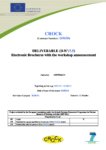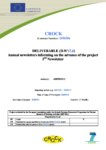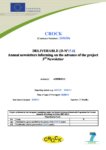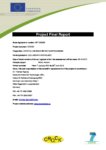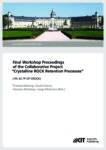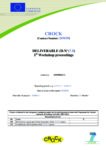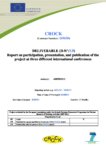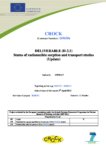CROCK: Crystalline rock retention processes
CROCK was a two-and-a-half-year project that aimed to develop a methodology for decreasing the uncertainty in the long-term prediction of radionuclide migration in crystalline rocks. Work included sorption experiments on rock samples, including specially collected non-oxidised samples, and the development of transport simulations and models. Overall CROCK provided better understanding of key process of radionuclide migration and eliminated or reduced a number of uncertainties related to performance assessment.
Overview
Project Dates: 01/01/2011 – 30/06/2013
Project Status: Closed
Project Website: http://www.crockproject.eu (defunct)
There are a number of existing and planned disposal facilities situated in crystalline host rocks such as granite and diorite. Understanding the radionuclide transport processes in the host-rock far-field is vital for the safety case and performance assessments of these facilities. High uncertainty with respect to the radionuclide transport in the crystalline host-rock far-field around geological disposal of high-level radioactive wastes is undesirable for safety arguments and necessitates conservatisms which may be overly constraining.
The Collaborative Project Crystalline ROCK retention processes (CP CROCK or CROCK) was established with the overall objective to develop a methodology for decreasing the uncertainty in the long-term prediction of radionuclide migration in the crystalline rock repository far-field. It builds on the output and main conclusions of the FUNMIG project and the Swedish site selection programme. The experimental program spanned from the nano-resolution to the Performance Assessment (PA) relevant km-scale, considering both physical and chemical retention processes. This was supported and augmented by a modelling program which likewise spanned scales from the nano-resolution to the km-scale.
Objective
The key problem that led to the initiation of the CROCK project was the high levels of uncertainty with respect to radionuclide transport in the crystalline host-rock far-field that were identified by Waste Management Organisations. In response, the CROCK project focused on providing waste management organisations with a tool for improving the situation in forthcoming site investigation programmes. The key objectives were:
- to increase scientific and process understanding in the transport simulations used to support Performance Assessment conclusions for the purpose of increasing confidence in the safety of nuclear waste disposal;
- to investigate to what extent the present uncertainty with respect to radionuclide transport in the crystalline host-rock far-field can be lowered by application of the methodology generated by the project;
- to demonstrate how the project outcomes can be used in Safety Assessments; and
- to propose how the developed approach can be successfully used in forthcoming site investigation programmes.
The scientific work program was structured into six work packages, each covering different aspects of the project’s scope:
Work Package 1: Experimental material and characterisation: Focused on organising new drill-core samples from Äspö Underground Rock Laboratory, which were sampled and handled under anoxic conditions. Previous investigations were based on crystalline rock material that was drilled under the use of oxidising surface water and/or where the drill cores have subsequently been treated, handled, transported and stored in contact with air. The usage – for the first time – of un-oxidised material in subsequent sorption studies is of special importance for redox-sensitive radionuclides and reflects the conditions in a repository after closure.
Work Package 2: Radionuclide transport and sorption studies: Focused on decreasing the degree of uncertainty on retention parameters in crystalline rocks by providing sound experimental methodologies and improving knowledge of retention processes in such heterogeneous materials. The existing uncertainties are related both to conceptual aspects and experimental problems (i.e. data gathered under conditions not fully representative of the scenario of interest or using samples not correctly handled or conserved) which need to be minimised. The effects of pH, ionic strength and radionuclide concentration were analysed with the ultimate objective of developing sorption models for a more mechanistic description of retention in heterogeneous rocks.
Work Package 3: Real system analysis: Focused on assessing the matrix diffusion processes based on natural inert tracer profiles away from fracture surfaces in real system samples. As part of this work package, the behaviour of radionuclides in crystalline rock far-field was also studied, based on data generated on natural chemical homologues from previous and ongoing studies.
Work Package 4: Conceptualisation and modelling: Focused on minimising uncertainties in performance assessments by developing and evaluating approaches for generating reliable data, improving the understanding of controls over radionuclide migration and evaluating modelling approaches. This particularly focused on the estimation of the distribution coefficient (Kd), which relates the radionuclide mass retained in the solid phase to its aqueous concentration. This parameter lumps together prior information related to radionuclide retention processes.
Work Package 5: Application to the safety case: When dealing with safety assessment calculations, the distribution coefficient, Kd, is often used. Although this modelling strategy is computationally appealing, it fails in describing the underlying nonlinearities of the system, especially when geochemical conditions are expected to change dramatically over the considered time frame (e.g. the transition from temperate to glacial conditions). Work Package 5 focused on assessing different modelling approaches that, on the one hand allow nonlinearities to be properly accounted for and, on the other hand, try to circumvent the computational limitations of “standard” fully coupled models.
Work Package 6: Documentation: Focused on reviewing processes which exert a major influence on the transport and retention of radionuclides in the far-field, as well as on the main conceptual models describing these processes available in the scientific literature.
Results
The CROCK project, besides the provision of new non-oxidised Äspö rock samples, increased understanding of the key process of radionuclide migration. For redox-sensitive radionuclides a higher retardation was demonstrated, producing a positive impact on the safety case. Furthermore, within the scope of the project, no additional processes were identified or observations made which suggested an enhanced radionuclide migration.
The results specific to each work package are as follows:
Work Package 1: Experimental material and characterisation: New drill core samples were taken from Äspö using un-oxidised drilling water and ensuring the exclusion of oxygen during sampling, storage and transportation. Borehole core sections, disks and crushed material of different size fractions were provided to the beneficiaries for subsequent sorption studies. Additionally, CROCK supported the characterisation of sample material from disposal sites in Russia and granites of different origins in Europe for use in other work packages.
Work Package 2: Radionuclide transport and sorption studies: Granites from different sites were used in sorption experiments with a special emphasis on the freshly sampled Äspö diorite. Studies were focused on different radionuclides: an ion exchangeable dominated element (Cs), a strongly sorbing surface-complexation-dominated element (Eu), redox-sensitive elements (U, Np, Tc, Se) and conservative non-sorbing tracers (HTO, Cl). Micro-scale sorption studies on non-crushed rocks provided surface distribution coefficients (Ka) directly measured on intact rocks and single minerals and determined which are the more important minerals for the retention of different radionuclides.
Work Package 3: Real system analysis: Analysis of pore water data collected for the Swedish site characterisation programme at Forsmark and Laxemar was used. The CROCK work improved methods for eliminating the theoretical bias introduced to downhole electrical resistivity probe measurements by surface conduction. These methods were used to derive upscaled values of diffusion length, porosity and diffusion coefficients, which are key parameters required for the quantitative models of work package 5.
Work Package 4: Conceptualisation and modelling: A diverse range of approaches was adopted by the different modelling teams to attack the uncertainties in performance assessment modelling. AMPHOS approached the problem of Kd estimation in PA through the use of a semi-empirical spreadsheet tool based on a simplified representation of surface complexation and ion exchange. KEMAKTA, on the other hand, studied the Kd estimation problem by framing the issue in terms of generalised empirical relations describing binding constants in surface complexation models through the use of geochemical analogies. VTT looked at the problem on both a microscopic level using quantum chemistry computational approaches in parallel to more traditional approaches involving fitting of surface complexation binding constants to macroscopic sorption measurement data for biotite (a mineral thought to dominate sorption on site-specific rocks within the Finnish national program for disposal of spent nuclear fuel). In addition, the KIT-INE team studied the simultaneous flow and reactive transport of radionuclides in laboratory tracer migration experiments involving a confined fracture sample.
Work Package 5: Application to the safety case: A number of modelling approaches were assessed and tested against a synthetic benchmark exercise that describes the migration of a set of radionuclides from the repository to the surface. Modelling approaches included using the CrunchFlow program to reproduce alternating fresh and saline groundwater pulses to provoke clearly non-linear remobilisation behaviour which cannot be captured by a traditional constant Kd modelling approach. The FASTREACT methodology was also used to carry out mechanistic reactive transport simulations over the set of proposed flow paths of the benchmark exercise. In addition, the MCPhreeqc tool was developed to apply Monte Carlo simulations automatically to the PhreeqC geochemical models. Modelling was performed facilitate the assessment of Kd and evaluate the uncertainties based on upscaled sorption properties for three different scales: molecular level (less than 100 atoms), surface complexation and single fracture scale.
Work Package 6: Documentation: Engagement with the end user group highlighted a number of issues in the transport of radionuclides in higher-strength rock that need further treatment. These were suggested as topics for future studies.

